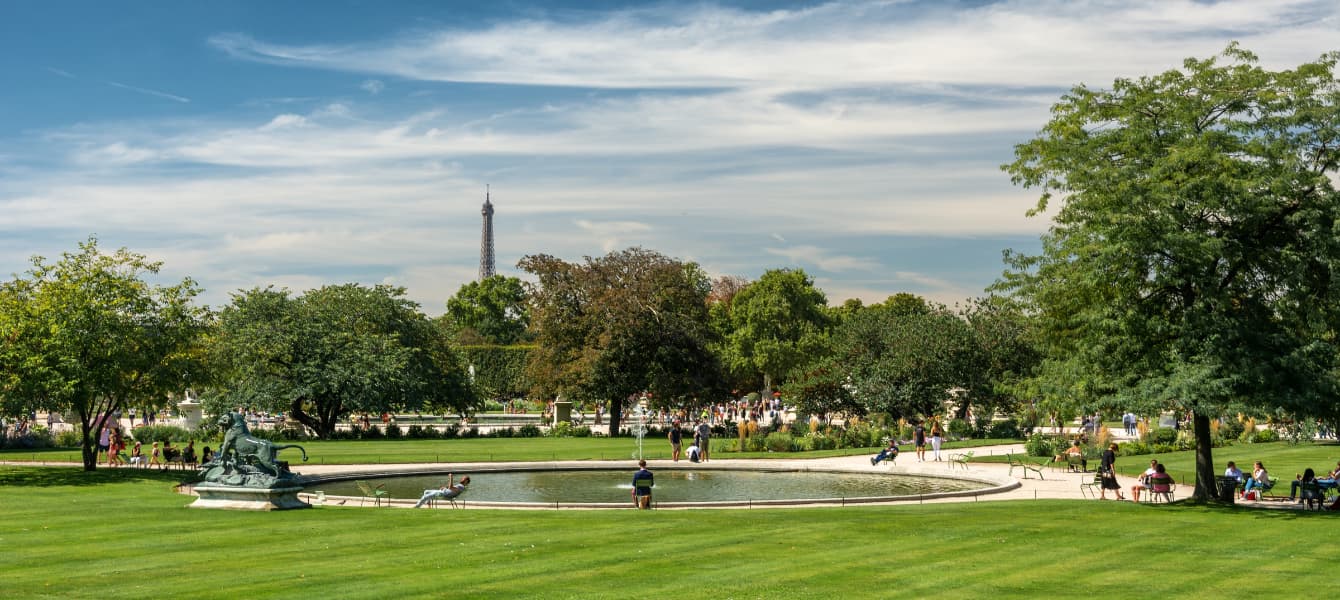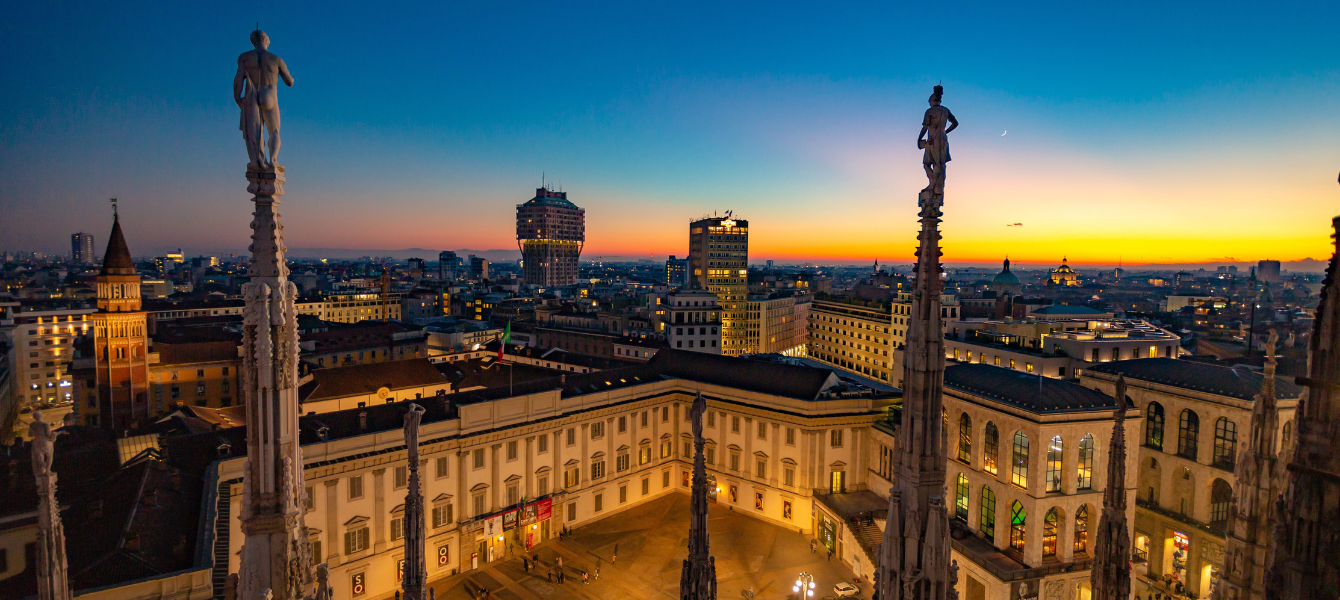The Tuileries Garden (Jardin des Tuileries in French) is a public garden between the Louvre Museum and the Place de la Concorde in central Paris. It was originally created in 1564 as a private garden for the Tuileries Palace, which Queen Catherine de Medici, the widow of King Henry II of France, commissioned.
After the French Revolution, the Tuileries Palace was destroyed, and the gardens became a public park. Today, the Tuileries Garden is a popular tourist destination and a beloved spot for locals. It is a great place to take a stroll, have a picnic, or simply relax and enjoy the beautiful scenery.
Quick Jumplinks
The History of Tuileries Garden – From Royal Garden to Public Park
In the mid-16th century, Queen Catherine de’ Medici, longing for her Italian roots, decided to build a new palace and garden complex just outside of Paris. The land she chose had been occupied by tile factories (“Tuileries”) for centuries, thus giving the new royal estate its name.
Over a hundred years later, King Louis XIV’s famed landscape architect, André Le Nôtre, completely revamped the entire garden, transforming it into a space accessible to the “well-dressed public.” The garden was designed around a central axis, which runs from the Carrousel du Louvre to the Place de la Concorde.
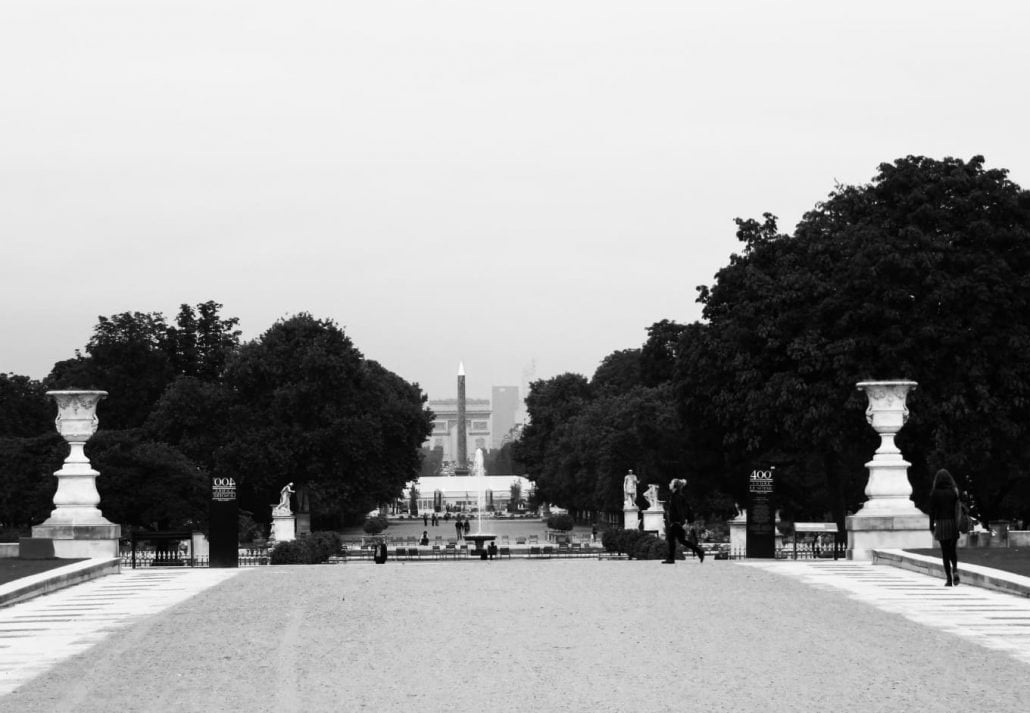
The following centuries saw the beautiful garden go through various changes, with restricted access periods and even private sections created by emperors Napoleon I and Napoleon III. Finally, in 1871, the Italian garden became fully open to the public for good.
Ironically, this same year witnessed the burning down of the Tuileries Palace by revolutionaries protesting against monarchical and imperial rule. While the palace never rose again, the gardens persevered.
In 1990, a competition resulted in the garden’s renovation. The winning landscape architects skillfully blended modern features with the historic design, ensuring the Tuileries Garden’s continued relevance.
Tuileries Garden – Key Features
Formal French Gardens: The garden is laid out in a formal French style, with symmetrical flower beds, manicured lawns, and gravel walkways.
Statues: The gardens are home to a collection of contemporary sculptures and statues, including works by famous sculptors like Maillol, Rodin, and Giacometti.
Ponds: The Tuileries Gardens have two large ponds, which are a popular spot for boating and relaxing.
Jeu de Paume: The Jeu de Paume is a modern and contemporary art gallery located on the edge of the gardens.
Relaxation and Activities: The Tuileries Garden is a great place to relax and enjoy the outdoors. Visitors can take a stroll through the gardens, have a picnic on the lawn, rent a boat to paddle on the ponds, play chess, or simply people-watch.
The Ferris Wheel: During the summer months, a Ferris wheel is installed in the eastern part of the garden, offering stunning views of the city.
Around Tuileries Garden
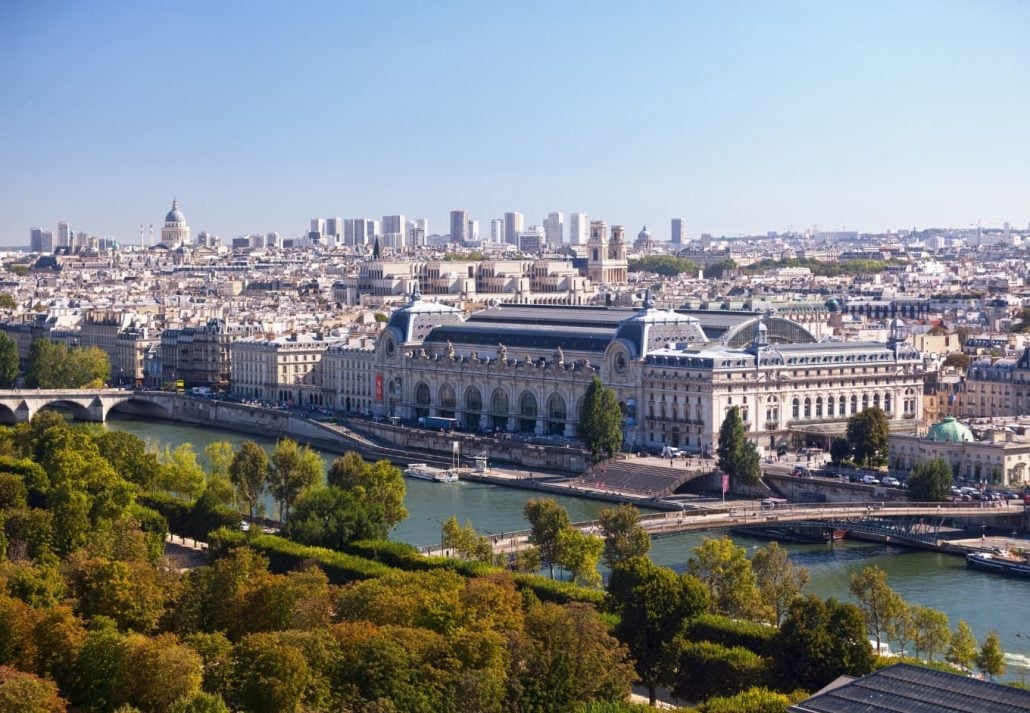
Imagine yourself in the heart of the garden, facing north towards Rue de Rivoli. To your right, the Louvre stretches out, seemingly haunted by the vanished Tuileries Palace that once stood beside it.
Now, turn west, and let your gaze sweep across Place de la Concorde, taking in the Champs-Elysées, the Arc de Triomphe, and even the distant grandeur of the Grande Arche de la Défense. The Musée de l’Orangerie is also located on the western end of the gardens and is famous for its collection of Monet’s Water Lilies paintings.
Finally, spin around. The Seine River flows behind you, leading your eye to the Musée d’Orsay on the opposite bank. And there, a bit to your right, can’t you just make out the Eiffel Tower?
Don’t miss the Arc de Triomphe du Carrousel! This triumphal arch is a smaller sibling to the iconic Arc de Triomphe de l’Étoile, built around the same time (early 1800s) for the same purpose: to honor Napoleon’s victories and those who fell in battle.
Tuileries Garden – Areas to Enjoy
The Grand Carré
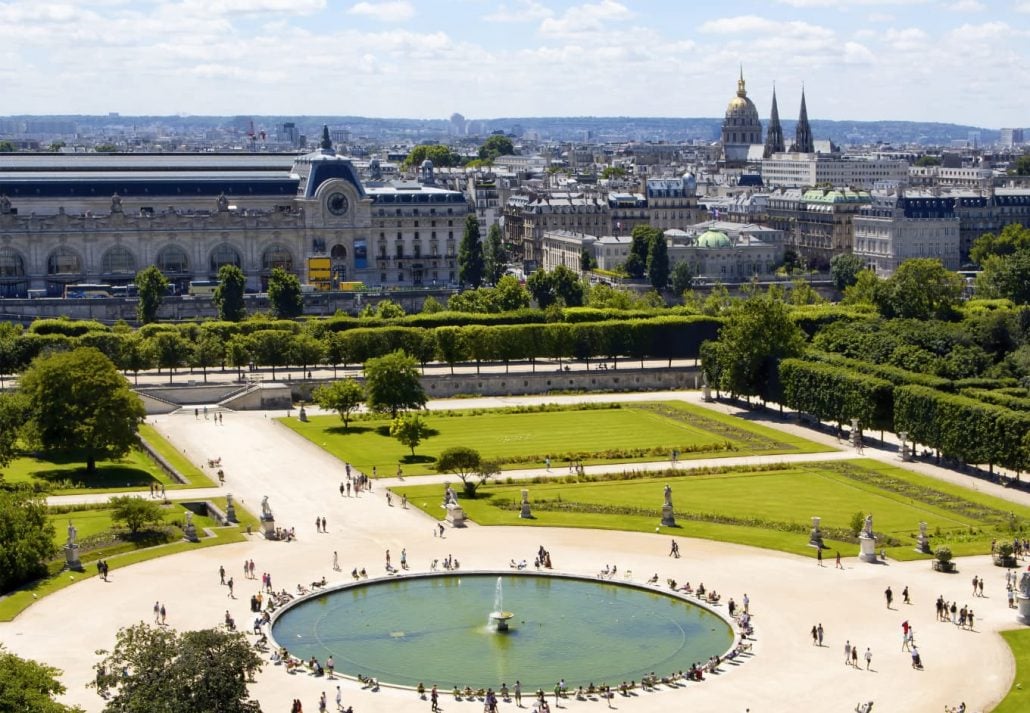
Imagine peering out the Louvre’s windows and seeing a meticulously designed garden. This is the Grand Carré, a formal French garden section featuring symmetrical flower beds and ponds outlined by low boxwood hedges. While the flower designs are simpler today, they offer more creative freedom for gardeners.
The Grand Couvert
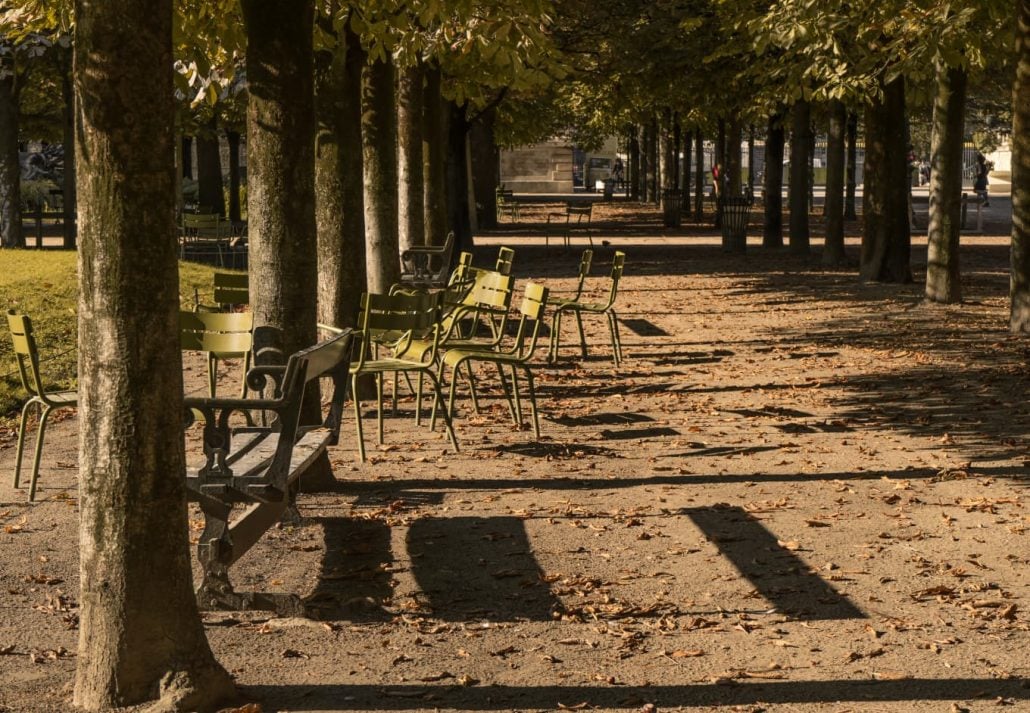
Next comes a shady haven – the Grand Couvert. Here, eight groves of different deciduous trees, planted by Le Nôtre, create a unique atmosphere in each section. The majestic Grande Allée cuts through this wooded area, perfectly aligned with the Champs-Elysées, an extension designed by Le Nôtre himself.
The Horseshoe Ramp and Terraces
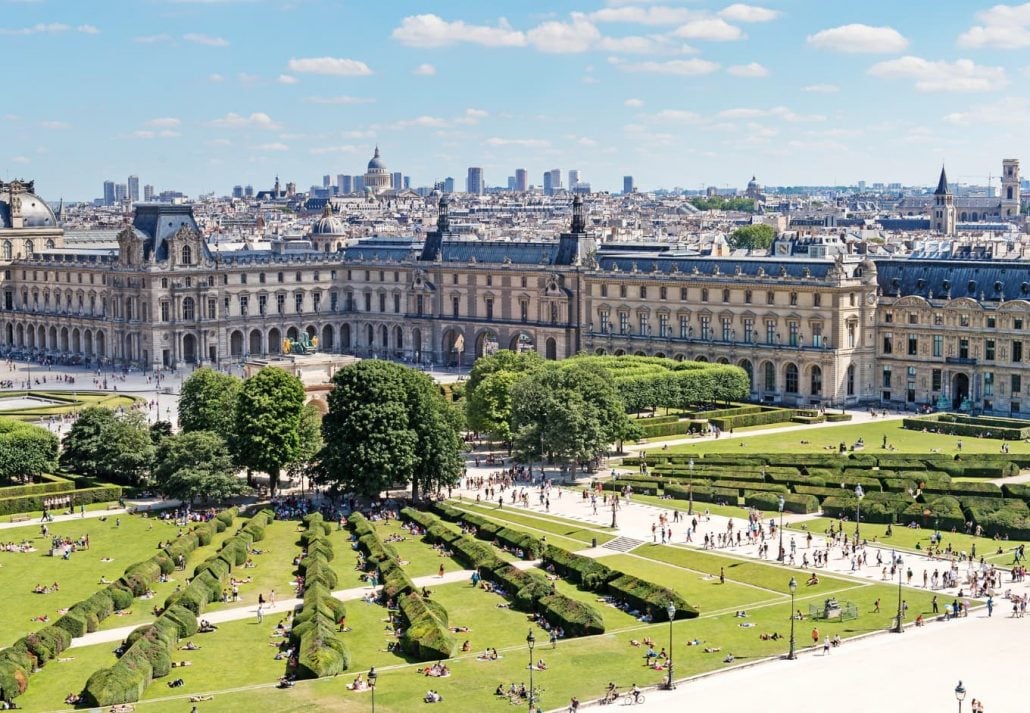
An open area, the Octogone, surrounds the octagonal Grand Bassin pond. From here, you’ll see horseshoe-shaped ramps leading up to the bordering terraces. The Seine-side terrace acts as a protective embankment, while the Terrasse des Feuillants runs alongside the rue de Rivoli on the opposite side.
Stay Near Tuileries Garden
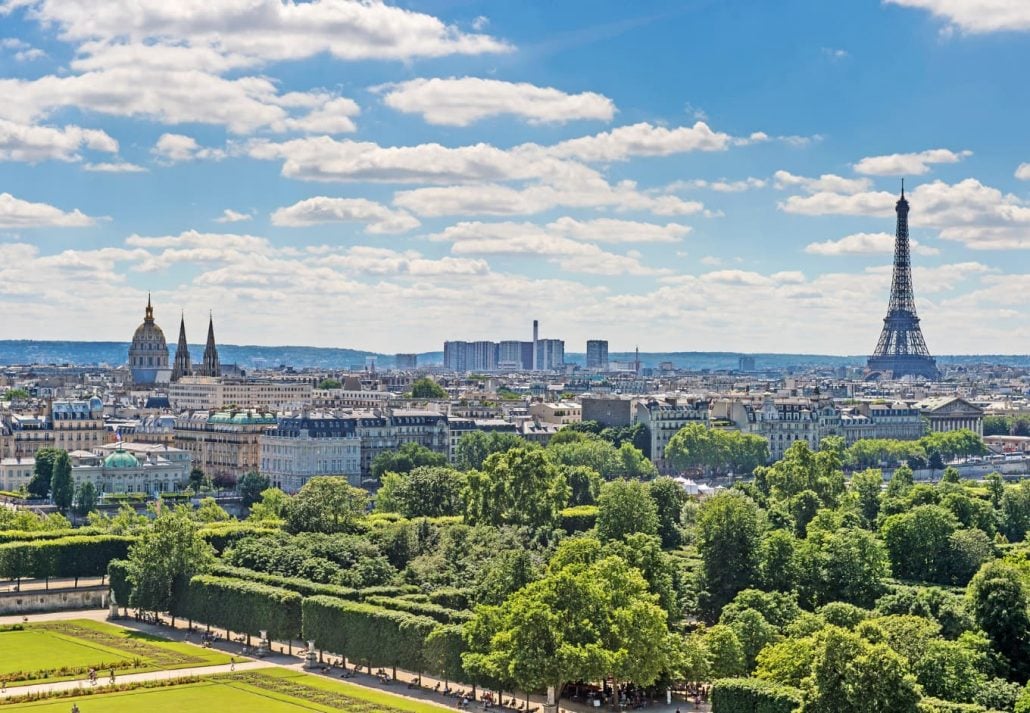
There are many charming places to stay near the Tuileries Garden, depending on your budget and style. For a luxurious stay right next to the garden, consider the Maison Armance – Esprit de France, a beautiful boutique hotel with stunning rooms and excellent service.
Another option is the Hôtel Louvre Saint-Honoré, a contemporary hotel near the Louvre Museum that offers polished quarters, a 24/7 lounge/bar, and a terrace.
For a more historic ambiance, check out Hôtel La Tamise, a chic hotel with some rooms offering views of the Jardin des Tuileries, housed in a restored 19th-century townhouse.
Plan Your Visit to Tuileries Garden
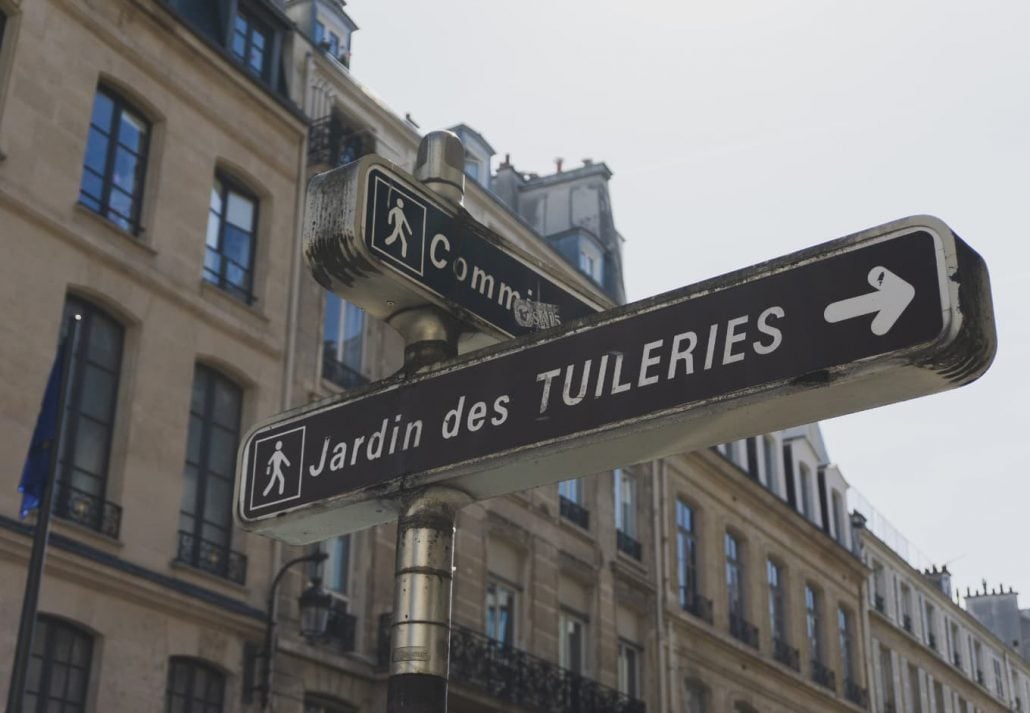
Tuileries Garden is easily accessible by Paris Metro Line 1 (stations Tuileries, Palais Royal, or Concorde). It’s open all week long!
➤ In summer (Jun to Aug), stroll through the park between 7 am and 11 pm.
➤ During spring (Mar, Apr, May) and fall (Sept), enjoy the gardens until 9 pm.
➤ Throughout the rest of the year, the park is open from 7:30 am to 7:30 pm.
➤ Please note: Visitors must leave 30 minutes before closing time in all seasons.
Frequently Asked Questions
What is the Tuileries Garden?
The Tuileries Garden (Jardin des Tuileries in French) is a large public garden located in the center of Paris. Often compared to Central Park in New York City, it’s a popular spot for relaxation, strolling, and people-watching.
Where is the Tuileries Garden located?
The Tuileries Garden is situated between the Louvre Museum and the Place de la Concorde. You can easily access it from several metro stations nearby.
Is the Tuileries Garden free to enter?
Yes, the Tuileries Garden is completely free to enter and is open to the public every day.
Are there any restaurants or cafes in the Tuileries Garden?
There are several cafes and kiosks scattered throughout the gardens where you can grab a snack, drink, or light meal. Notably, Café Marly offers a more upscale dining experience with a beautiful view of the Louvre.
